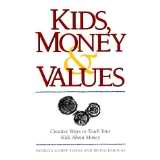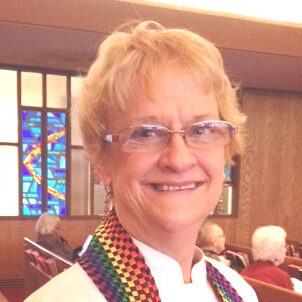Kids, Money & Values
By Patricia Schiff Estess and Irving Barocas, Betterway Books, 1994
Written for the “Live Simply” (2016) issue of
Giving: Growing Joyful Stewards in Your Congregation
 published with permission
published with permission
It’s no surprise that Kids, Money & Values is still in print: it gives practical ideas and exercises for parents and other adults to use with children. Authors Estess and Schiff first present a developmental chart of usual interests, skills and abilities of children from preschool to early teens as they relate to arithmetic, money, property, and honesty issues. Next they invite readers to answer a quiz about their own goals for the children they have in mind. Each chapter presents a scenario, then discusses different options for adult response to the child. Topics range from parenting and passing on values, to earning, saving and investing; and from spending, sharing and caring, to making responsible choices.
Allowances can help children learn to manage money, grow in their sense of control, and share in the family’s resources. The authors advise keeping an allowance separate from chores, love, approval, punishment and rewards. While kids are bombarded with “buy” messages every day, Estess and Barocas recommend graduated ways to help them outgrow the “I want what I want when I want it” syndrome.
The book also suggests ways children can make the connection between work and money within the family and in neighborhood involvement. The authors recommend ways to teach children to save on a regular basis, put off satisfaction for a reasonable time, and find other ways to help their savings grow. Most powerfully, children look to their parents to model the behavior they teach.
When it comes to spending, Kids, Money & Values recommends ways for children to discover how to trade items, talk back to television commercials, and learn about sales pitches. The book also gives tips for helping kids become better consumers. Best of all, in each chapter the authors recommend what adults can do when children make mistakes, so they can learn from their experiences and move on.


